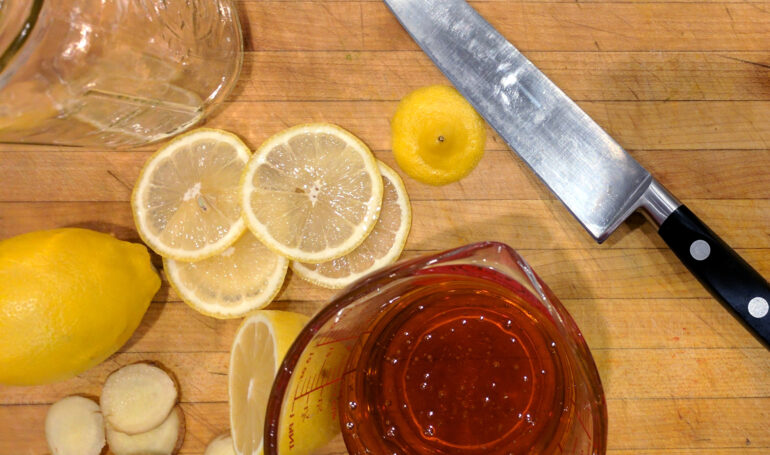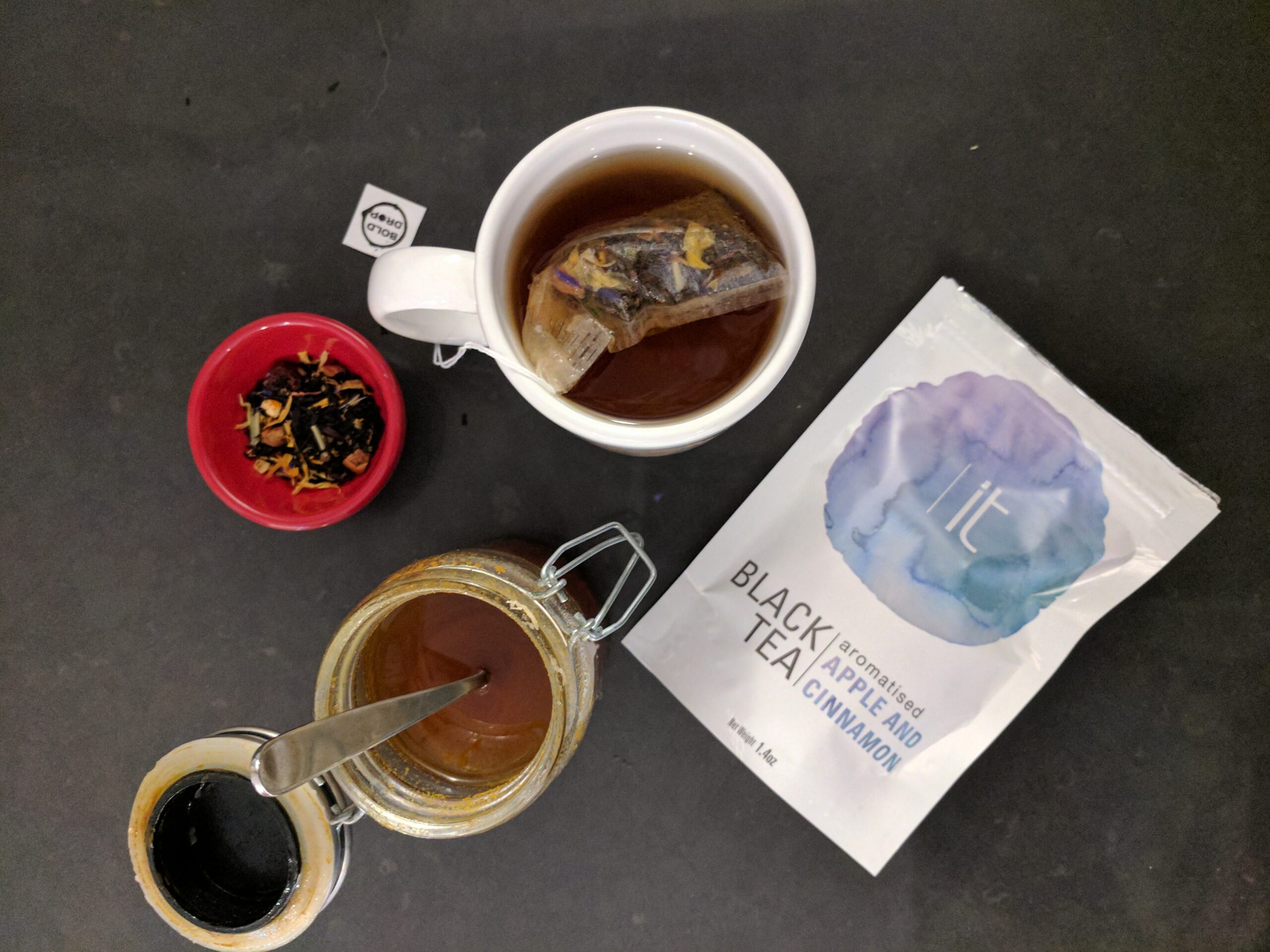
Soothing lemon honey ferment for scratchy throat season
I woke up Tuesday with a tickle in my throat and I opted to pretend it wasn’t there. I woke up Wednesday with that tickle still in my throat and I furled my brow and wished it went away. I woke up Thursday with that tickle turned into a scratching on my tonsils and I decided to pull out my lemon honey ferment and a hot cup of tea. And now, that tickle in my throat is feeling soothed as can be.
Sure, you can dip a spoonful of honey and a squeeze of fresh lemon into a hot cup of tea,  but why not take it to the next level with a little microbial action? Especially when it is so easy to do. It only takes two ingredients. You can add a third if you are daring. Actually, it is not only lemon and ginger that get in on this fun honey action, but garlic is also a favorite. Check out this recipe by Killer Pickles for more about her Honeyed Garlic recipe.
but why not take it to the next level with a little microbial action? Especially when it is so easy to do. It only takes two ingredients. You can add a third if you are daring. Actually, it is not only lemon and ginger that get in on this fun honey action, but garlic is also a favorite. Check out this recipe by Killer Pickles for more about her Honeyed Garlic recipe.
Here are the in-depth and detailed (read: super easy) instructions to making your own honey-lemon (and ginger, if you are so inclined) at home.
- Buy a pint of raw honey.
- Thinly slice whole, preferably organic, lemons (2 works well for a pint of honey).
- Thinly slice ginger with the skin on, if you are using. (You can peel is, but there are a good number of yeasties on the surface of ginger).
- Layer the lemon, ginger and honey into a quart jar (this will expand, so better for a bigger jar).
- Shake, shake, shake it up. Make sure you fully coat all the lemon and ginger in the jar.
- Wait. Shake. Wait. Shake. Do this twice a day for 5 days. During those wait times, make sure the lid is not tightened to allow gases to escape. Don’t forget to re-tighten it to shake or you will be a sticky mess.
- At the end of 5 days, remove the lemon and ginger to a separate container. You can leave it in there indefinitely, but it will get more and more bitter from the pith.

Now, you have a deliciously infused honey and delicious honey coated and softened ginger and lemons. Both should be stored in the refrigerator because they will continue to ferment at room temperature. If that honey keeps fermenting, soon you will have an alcoholic mead, which can be yummy and soothing in its own respect. But that wasn’t really the goal here, was it?
How does this work, you ask? Well, honey inherently contains some great yeast microbes that allow it to ferment on its own. You can learn a bit more about it from the good people at Cultures for Health. A pure honey or honey in the hive doesn’t ferment because bees are so super smart that they k
now to dehydrate honey to less than 18% water content to prevent fermentation. As soon as you add the lemons and ginger, the water content gets high enough to allow the honey yeasts, the ginger yeasts and even the yeasts on the surface of the lemon to get to work.
What can you do with this? Well, you can eat both right from the jar because they  are delicious. You can use the them to flavor hot or cold teas and drinks. For that scratchy throat, I opted for a delicious fall tea I received in my monthly Try the World box because they had a lovely fall flavors Apple Cinnamon Black Tea from IT by jugias. You can top ice cream with them or add them to an ice cream base. You can make a deliciously infused sauce for something like, say, pork chops.
are delicious. You can use the them to flavor hot or cold teas and drinks. For that scratchy throat, I opted for a delicious fall tea I received in my monthly Try the World box because they had a lovely fall flavors Apple Cinnamon Black Tea from IT by jugias. You can top ice cream with them or add them to an ice cream base. You can make a deliciously infused sauce for something like, say, pork chops.
I did a bit of digging to find out if there are any specific probiotic benefits to this concoction. While, yes, it is the microbial action of yeasts transforming the flavors and textures for the lemons, gingers and honey, it does not appear these yeasties have any particular health benefits other than providing you a bit of happiness from their amazing flavors!
Happy Cooking!
Leave a Reply